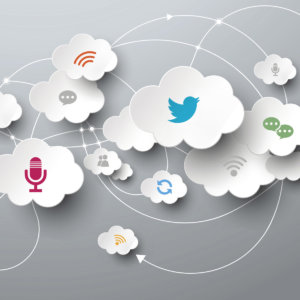Simplifying the Enterprise Social Media Landscape
There are a lot of platforms your business could use. How do you pick which one fits you best?
Topics
Social Business
Part 1 of a 5-part series examining how social media has and will affect how organizations functions. The series is derived from a full-length article found in MIS Quarterly Executive.
When executives talk about social media in business, they typically talk about it in terms of specific platforms. They ask: does our company need to have a presence on Facebook, Twitter, LinkedIn, or Snapchat? Should we adopt Yammer, Jive, Sharepoint, IBM Connects, or the upcoming Facebook at Work as an enterprise collaboration tool?
The problem with thinking about social media in terms of specific platforms is that it often leaves companies chasing the latest and greatest features, which are often changing faster than any of us can keep up with. This approach leaves executives constantly playing catch-up to whatever features social media platforms choose to add or remove, rather than getting ahead of these to think strategically about how to implement them in their business context.
Marketers may care more about who is using a particular platform, rather than about the platform’s specific features, so they may be left with no choice but to follow the trends. For other enterprise applications of social media, however — such as innovation, leadership, or operations — the specific features of the technology may matter a great deal.
In a forthcoming article in MIS Quarterly Executive1, I propose a simplified way of thinking about both the current state and the future possibilities of social media in the enterprise.
Key Social Media Capabilities
I argue that social media platforms provide two key capabilities in the enterprise context — managing networks and sharing digital content.
In terms of managing networks, social media platforms provide new capabilities for relating to others that have previously been unavailable to employees. For instance, although management research has long recognized that someone’s network is quite influential for employees, it has also found that people are generally pretty bad at understanding what their interpersonal networks actually look like. Social media, however, allows people to visualize and analyze their social networks. Facebook automatically identifies mutual friends. LinkedIn lets you know the shortest and best path to desired contacts.
References (1)
1. Kane, G. C. “Enterprise Social Media: Current Capabilities and Future Possibilities.” MIS Quarterly Executive 15, no. 1 (March 2015).






Comments (2)
noreen poli
Nik Zafri Abdul Majid